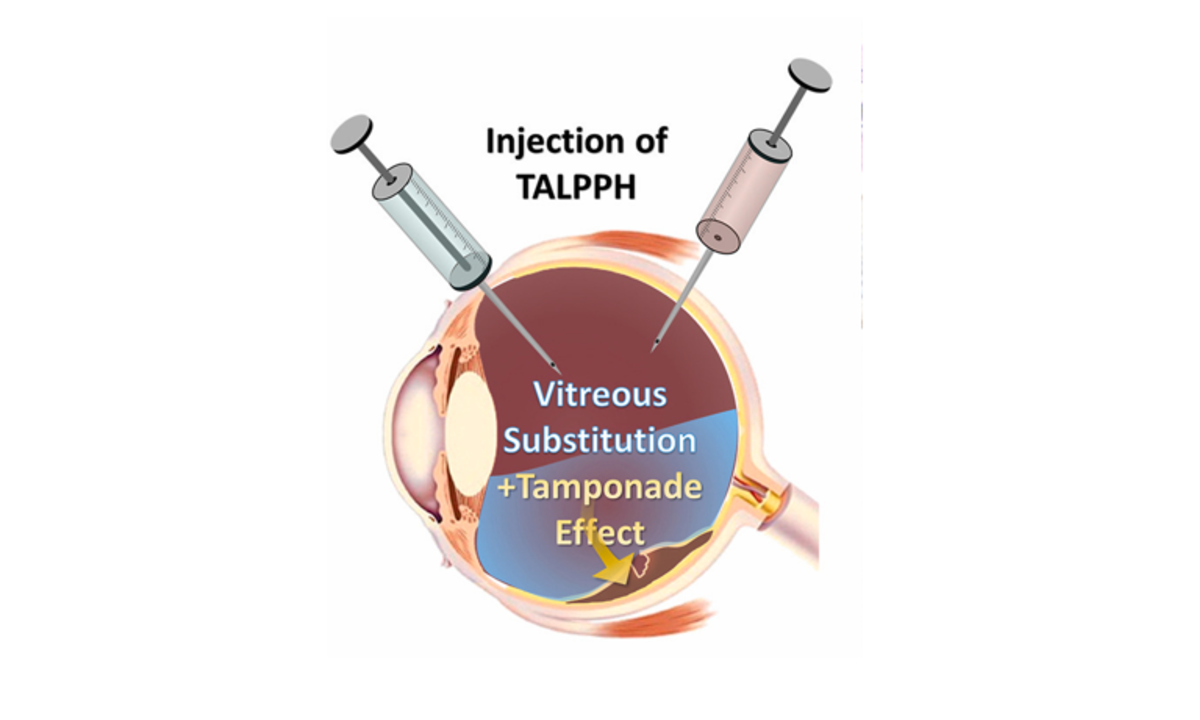Artificial Vitreous Body Formulated from Biomaterials Obtained from Algae
A collaborative effort between Korean scientists has resulted in the creation of an artificial vitreous body for treating retinal detachment. This solution is based on a natural carbohydrate derived from algae.

The research findings were recently published in Biomaterials, an international journal of biomaterials published by Elsevier.
The vitreous body is contributing to the eye's structural integrity. Posterior vitreous detachment occurs in the area where the vitreous body and retina are strongly attached, which sometimes causes retinal tears that can lead to rhegmatogenous retinal detachment (RRD). This disease can ultimately lead to blindness and eye atrophy if not treated promptly with surgery before the macula detaches. RRD mainly occurs after middle age, but recently, it has also been frequently found in young people suffering from myopia in Asian countries.
While a common approach involves removing the vitreous body and substituting it with medical intraocular fillers like expandable gas or silicone oil, these fillers have been associated with various side effects. To address these concerns, the research team employed a modified form of alginate, a natural carbohydrate sourced from algae. Alginate, also known as alginic acid, is widely utilized in various industries, including food and medicine, for its ability to create viscous products. In this research, the team crafted a transparent alginate-phenylboronic acid/polyvinyl alcohol composite hydrogel (TALPPH) as a novel vitreous substitute with a tamponading function. TALPPH is able to build stable hydrogels by its fast in situ curing capacity, can be easily injected into the ocular space in a liquid state, and is nontoxic in vivo.
Retinal stabilization
The hydrogel, possessing high biocompatibility and optical properties akin to authentic vitreous body, enables patients to preserve their vision post-surgery. Its distinctive viscoelasticity effectively regulates fluid dynamics within the eye, contributing to retinal stabilization and the elimination of air bubbles.
To validate the hydrogel's stability and effectiveness, the team conducted experiments using animal models, specifically rabbit eyes, which closely resemble human eyes in structure, size, and physiological response. Implanting the hydrogel into rabbit eyes demonstrated its success in preventing the recurrence of retinal detachment, maintaining stability, and functioning well over an extended period without any adverse effects.
Incidence of retinal detachment cases in Korea is rising
Professor Hyung Joon Cha from the Department of Chemical Engineering at Pohang University of Science and Technology (POSTECH) who led the study remarked, “There is a correlation between retinal detachment and severe myopia and the prevalence of retinal detachment is increasing, particularly in young people. The incidence of retinal detachment cases in Korea rose by 50% in 2022 compared to 2017.” He expressed the team's commitment by saying, “Our team will enhance and progress the technology to make the hydrogel suitable for practical use in real-world eye care through ongoing research.”
Professor Woo Jin Jeong from the Dong-A University Hospital's Department of Ophthalmology stated, "The worldwide market for intraocular fillers is expanding at a rate of 3% per year.” He added, “We anticipate that the hydrogel we've created will prove beneficial in upcoming vitreoretinal surgeries."
Source: Pohang University of Science and Technology (POSTECH)